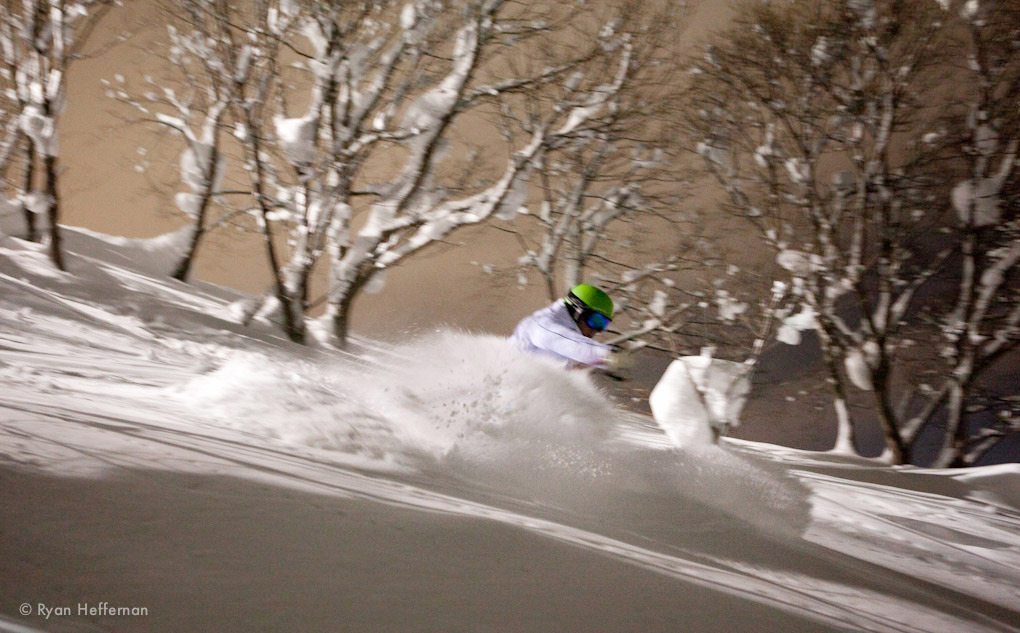WARMTH / WATERPROOFING / BREATHABILITY / VERSATILITY / DURABILITY:
Warmth: I don’t tend to run that cold, so in my book, this counts as a very warm jacket, certainly not one that I would break out on a spring day. It’s a cold weather coat that thrives in wet, cold temps. If you do run cold, adjust my comments accordingly, but for me, this is all the jacket I need for very cold days.
Waterproofing: So far, so good; as in, zero issues at all. And given that I used this jacket everyday for the greatest, longest storm cycle of my life (16 days), that’s saying something. Obviously, I can’t speak to the Niseko’s longterm waterproofness yet, but I haven’t experienced anything that makes me worry.
Breathability: I can’t say that I found the Niseko to be the most breathable jacket I’ve ever worn, but, again, I don’t tend to run cold, and, it’s a warmer jacket than what I often wear. Plus, conditions in Niseko were very wet, and we saw pretty significant fluctuations in the temperature. (The one constant was that it hardly ever stopped snowing….)
For its intended design—lift-accessed resort riding—I think the Niseko’s combination of warmth, breathability, and waterproofness is very good.
Versatility: The Eider Niseko is an excellent, dedicated ski jacket, a cold weather coat designed for resort riding. For anything beyond short sidecountry tours or long, strenuous bootpacks, I’d opt for something else. (And if this jacket isn’t too warm for you on longer tours or to yo-yo boot packs, well, then you and I have little in common.)

Durability: The Niseko jacket wasn’t built to be thrashed, and isn’t as burly as the TREW Bellows jacket. The jacket has a soft, nice finish and made it through a bunch of very tight tree skiing (where I was hitting and snapping off the occasional branch) without any tears. So while I wouldn’t go out of my way to abuse this thing, I feel like I could get a good number of seasons out of this jacket before I needed to replace it.
(However, if you are going to be shouldering your skis a lot, I’d stay away fromt the white color: the right shoulder of my Niseko jacket shows a few marks from ski edges. I could probably bleach them out, whatever.)
BOTTOM LINE:
I don’t tend to get cold too easily, and I don’t ski that often in brutally cold, wet conditions. For me, therefore, Eider’s Niseko feels like a whole lot of jacket, and certainly more than I need on many days. But as our other reviewers will attest, we experienced some fierce conditions for a few days in Niseko, and I was extremely glad to be wearing what I was wearing—these were conditions where being underdressed could have meant a lot worse than simply being a bit uncomfortable and cold.
Furthermore, if I was someone who ran cold or spent most of my time skiing in harsh conditions, then you’d probably have to fight me for the Niseko jacket before I’d let you take it.
The Niseko jacket is incredibly well thought out, carefully constructed, and aside from those relatively small zipper ties, I have yet to find a flaw. If you run cold or tend to ski in high winds and freezing temperatures, this could be an investment worth making. Of course, for lift-accessed riding on mellower days, you can open up the pit zips and you’re not going to roast, but the Niseko jacket was built to handle a whole lot more than those fair weather conditions.
The Niseko jacket represented one hell of an impressive introduction to the Eider brand, and I’m extremely curious to check out some of Eider’s more freeride-oriented, relaxed fit stuff, too.
